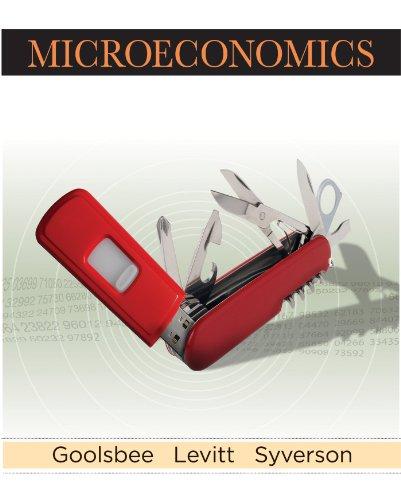11. Your university has an honors program that accepts exactly 40 freshmen each year. Every year before
Question:
11. Your university has an honors program that accepts exactly 40 freshmen each year. Every year before soliciting applications, students are informed of the standards for program participation.
The admissions staff observed that whenever the difficulty of the program requirements increased
(decreased), they received fewer (more) applicants than in the previous year and have since begun to adjust requirements for each incoming group of students in an attempt to equate the number of applicants with the number of spots in the program.
Though the system is not perfect, the administrators are able to estimate their applicant pool relatively accurately.
a. In this situation, what is the “price” that determines how many students will apply to the honors program? Also, assume that the people who run the honors program do not plan to expand or contract it. Depict the demand and supply curves that represent this situation.
b. How does the way “price” is determined in this situation differ from the way we normally think about the determination of equilibrium price?
c. Assume that applicants to the honors program are usually the most qualified students at the university. If the university began offering merit scholarships to incoming students, how would we expect the difficulty of the program to change over the next few years? Demonstrate your answer with a graph.
d. The president of the university became so impressed with the rigor of the first honors program that she decides to double its size. Assuming that the larger program accepts applicants in the same way, what will likely happen to the standards of the expanded honors program?
Demonstrate your answer with a graph.
e. Instead of expanding the first honors program, the faculty recommends introducing a whole new one. Suppose the first was an honors program in science. How would standards change for the science honors program if the new honors program were in math? How about art history? Explain your answers.
Step by Step Answer:

Microeconomics
ISBN: 9780716759751
1st Edition
Authors: Austan Goolsbee, Steven Levitt, Chad Syverson






